The Kit List That Keeps Your Team Safe (and You Covered)

When it comes to running a safe, compliant, and efficient site, the right kit can make all the difference. From managing foot traffic to shielding live works and avoiding trip hazards, having the correct construction site safety equipment isn’t just a good idea - it’s a legal and commercial necessity.
At Oxford Plastics, we design and supply safety equipment that creates safer, more efficient job sites. Keep reading to find out what safety equipment is needed and its importance.
Why Site Safety Equipment Matters
According to OSHA and UK HSE regulations, employers must provide a working environment that minimises risk to both workers and the public. Failing to do so can result in big fines, project delays, or worse, injury or fatality.
Beyond the regulatory angle, safe sites are productive sites. When your team feels secure and confident, efficiency improves, downtime drops, and your reputation grows.
Why PPE Isn’t Optional: Real Stats from Real Incidents
|
Equipment |
Statistic |
Source |
|
Hard Hats |
In a survey of occupational head injuries, 84% of workers who suffered impact‑injuries to the head were not wearing head protection. |
|
|
Safety Glasses & Eye Protection |
In 2020 there were 18,510 eye‑related injury or illness cases that resulted in days away from work; construction trades workers had 2,120 of those cases. |
|
|
High‑Visibility Clothing |
This is not a direct stat found for high‑visibility clothing alone, but falls, slips and trips caused 421 construction worker deaths in 2023, showing the importance of being seen and safe in high‑risk environments. |
|
|
Safety Gloves |
71% of hand injuries could have been prevented with wearing gloves; yet 70% of workers don’t wear hand protection and 30% of those who do use the wrong kind. |
|
|
Safety Footwear |
According to a top‑injuries report, cut, puncture and scrape issues (which proper footwear helps prevent) accounted for 17% of all construction injury claims (2017‑2022). |
|
|
Respiratory Protection |
Falls from elevations in construction represented approx. 81% of all fatal slips and trips in 2022, showing how inhalation hazards are one of many but often under‑addressed risks. |
|
|
Ear Protection |
Not a direct statistic found specific to ear protection usage, but the construction industry had a significant rate of worker injuries: in 2023, there were 1,075 fatal construction injuries. |
|
|
Fall Protection Equipment |
Falls, slips, and trips contributed to 421 construction worker deaths in 2023. |
|
|
Knee Pads & Body Protection |
In the “Top Injuries in Construction” report, strains (20%) and cuts, puncture and scrapes (17%) were the leading injury types 2017‑2022 - protective gear helps address those. |
|
|
First Aid Kits & Emergency Stations |
Worker deaths in the U.S. decreased from 38 per day in 1970 to 15 per day in 2023, showing how improvements in safety (including emergency preparedness) can make a difference. |
What Equipment Should Every Construction Site Have?
Personal Protective Equipment (PPE)
PPE forms the first line of defense between workers and potential hazards. Each piece is designed for a specific risk, and OSHA requires employers to provide and maintain appropriate gear.
Common PPE includes:
1. Hard Hats: Protecting Against Head Injuries
Workers should always be wearing hard hats as they cover workers’ heads from falling objects, impacts, and overhead hazards. On a busy site where cranes move materials and scaffolds are being adjusted, a worker without a proper hard hat is exposed to serious risks. Head trauma from falling tools or debris can result in life‑threatening injuries and long recovery times. Making sure that every worker is equipped with and wears a certified hard hat is a basic but essential safety step.

2. Safety Glasses & Eye Protection: Protecting Vision
Eyes are vulnerable if not protected and covered. Whether it’s debris from drilling, dust from concrete cutting, or chemical splashes from cleaning agents, the risk is high. Safety glasses and goggles offer protection from these hazards. If eye protection is ignored or inadequate, even a small injury can cause vision loss and weeks off work. For tasks like welding or grinding, full face shields become especially important.
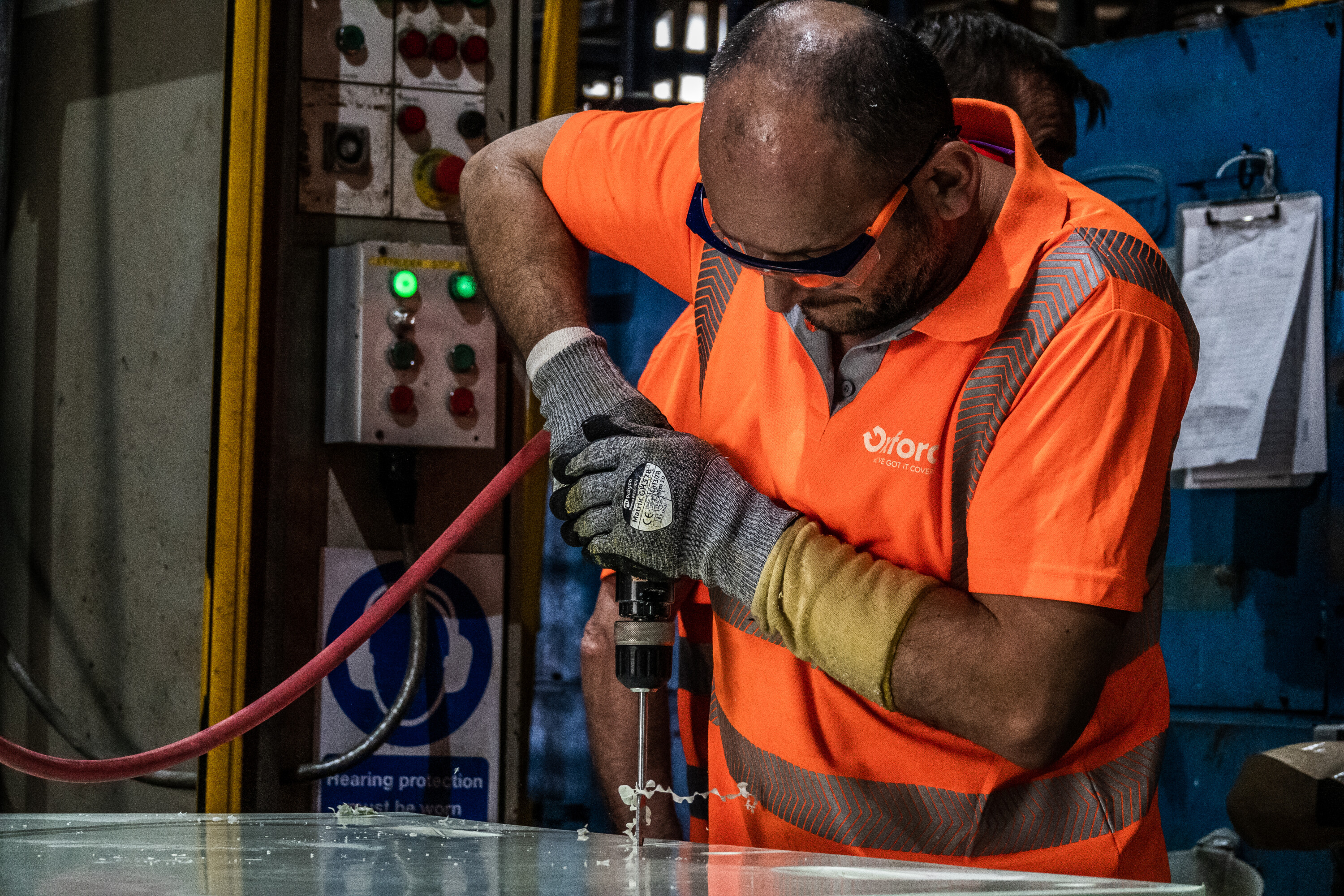
3. High‑Visibility Clothing: Ensuring Workers Are Seen
Construction zones often have moving vehicles, equipment, and pedestrian traffic. High‑visibility clothing, such as reflective vests or bright jackets, makes sure that workers remain visible, particularly in low light or when machinery is operating. Without it, the chance of collisions or near‑miss incidents rises significantly. Visibility is a simple but powerful way to reduce risk on site.

4. Safety Gloves: Shielding Hands from Cuts, Chemicals and Impact
Workers’ hands are exposed in nearly every task - lifting, carrying, operating tools, or adjusting materials. Workers that wear gloves protect themselves against cuts, abrasion, chemical exposure, vibration, and even electrical hazards when properly rated. Choosing the right glove type for each task matters. Without suitable gloves, hand injuries are among the most frequent and disruptive incidents on sites.
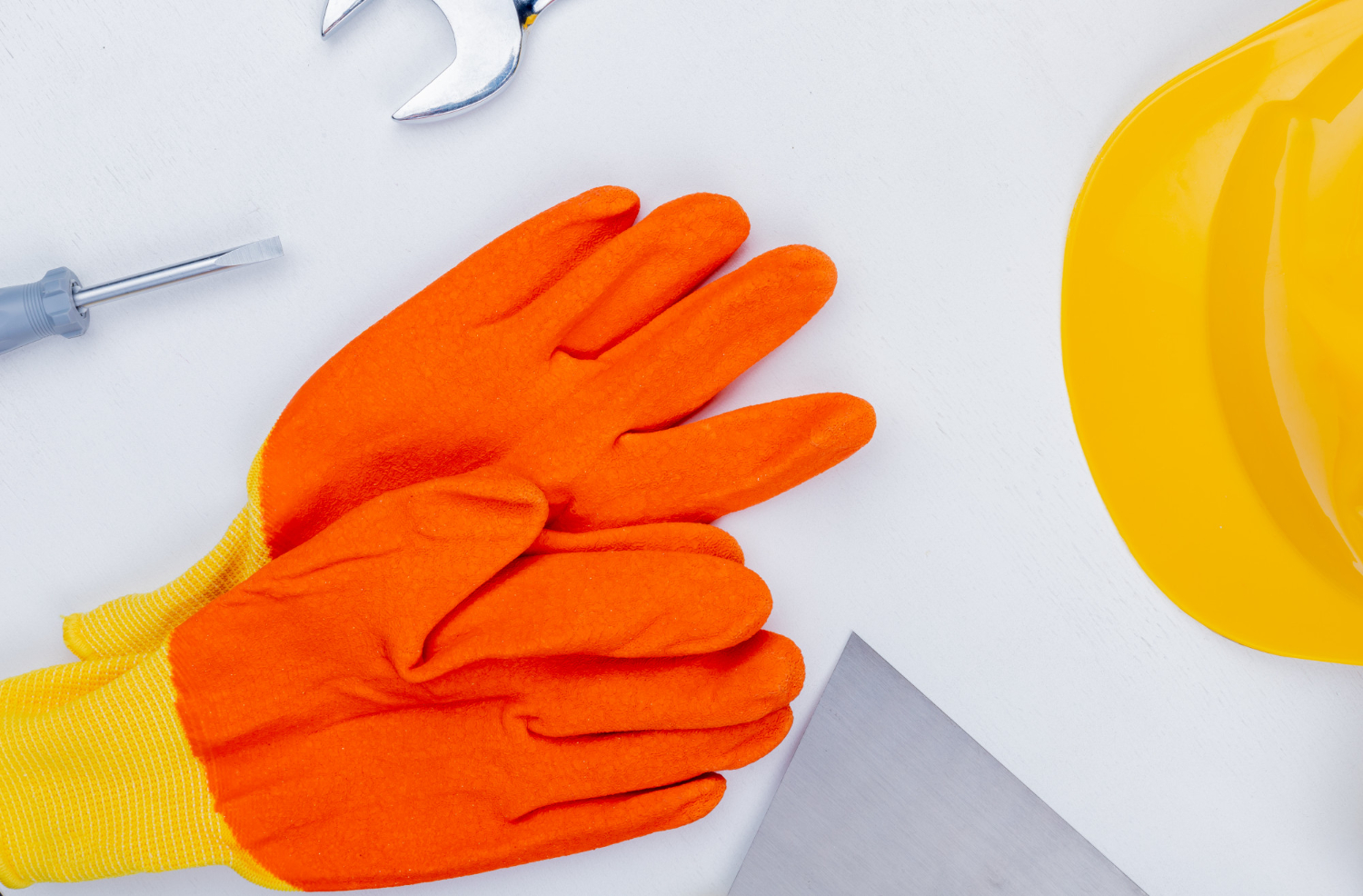
5. Safety Footwear: Preventing Slips and Foot Injuries
Workers who wear proper boots do more than keep feet warm or dry - they protect from crushing loads, punctures from nails or sharp objects, and slips on uneven or wet surfaces. Steel‑toe or composite‑toe boots with anti‑slip soles are critical. Without this protection, foot injuries can range from fractures to long‑term joint problems or long‑term absenteeism.

6. Respiratory Protection: Avoiding Inhalation Hazards
Construction sites generate dust, fumes, and microscopic particles, whether from demolition, sanding, or working with older materials that may contain silica or asbestos. Respirators or dust masks filter these harmful substances. When respiratory protection is lacking, workers face serious long‑term health risks such as silicosis, COPD, or occupational asthma.
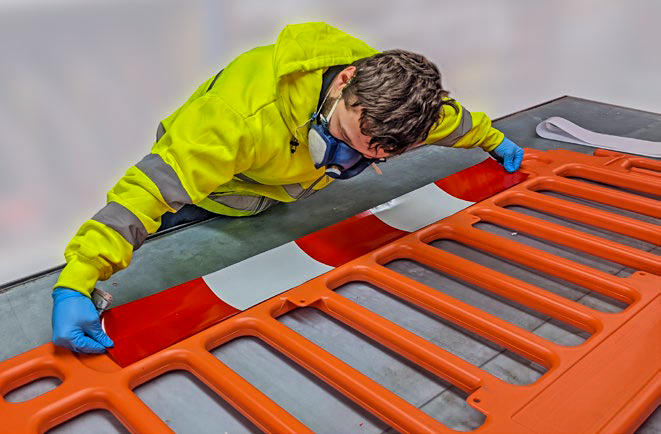
7. Ear Protection: Combating Long‑Term Hearing Loss
Heavy equipment and power tools often exceed safe noise levels. Prolonged exposure without hearing protection can lead to tinnitus or irreversible hearing loss. Earplugs or earmuffs dramatically reduce risk and protect workers long term.
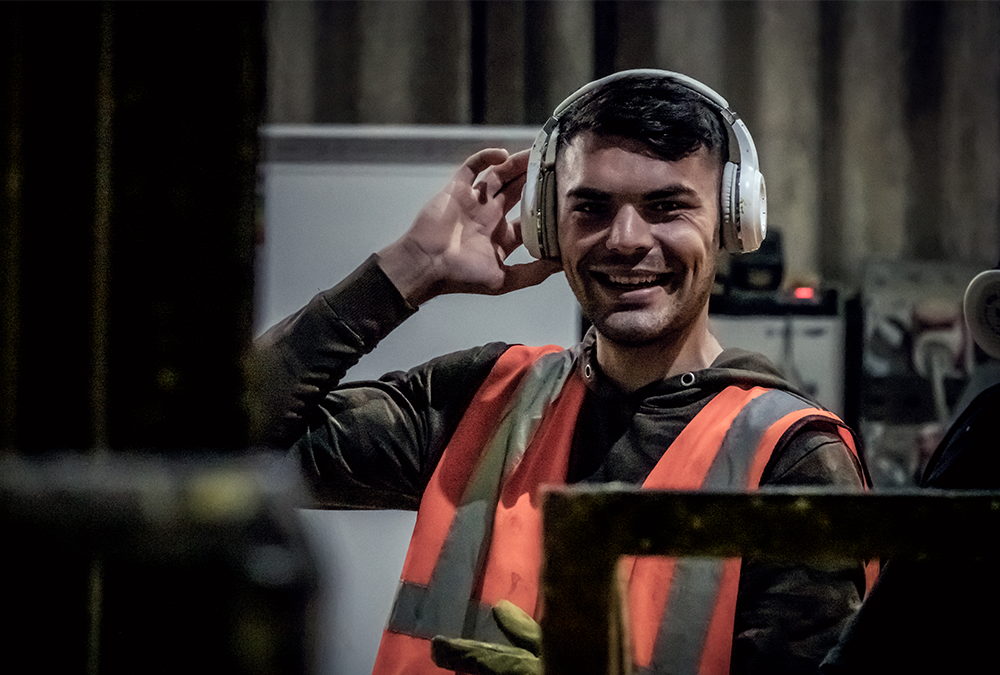
8. Fall Protection: Reducing Risks at Heights
Working at height remains one of the most dangerous activities on site. Falls from scaffolding, ladders or roofs account for a large share of construction injuries and fatalities. Proper fall protection. harnesses, lanyards, secure anchor points, guardrails, are essential. Without it, a momentary misstep can lead to serious injury or death.

9. Knee Pads & Body Protection: Supporting Strain and Impact Areas
Construction workers frequently kneel, crouch, or operate in tight spaces. Over time this causes strain on joints and the body. Knee pads and padded body protection gear reduce the risk of long‑term musculoskeletal injuries. Without this support, minor aches can develop into chronic pain or require surgery later.
10. First Aid Kits & Emergency Stations: Preparing for the Unexpected
Even with the best prevention, accidents still happen. That’s why it’s important to prepare for the unexpected by having accessible first aid kits and emergency stations. Being prepared can save lives, so it is important to make sure you have a good infrastructure and first aid kits on hand when needed.
Who Needs This Kit?
This safety equipment applies to a range of sectors and teams, including:
- Utility contractors
- Local authorities
- Traffic management companies
- Civil engineering & infrastructure firms
- Telecoms and power installers
- Construction companies managing live sites
If your team is working on or around a live construction site, this safety equipment at construction site locations is critical.
Site‑Specific Safety Infrastructure
Looking beyond the wearable kit, the physical layout of the site and its infrastructure play a key role in safety. Products from Oxford Plastics help create a safer environment:
- Trench Covers & Road Plates protect open utilities and work zones from collapse or misuse. Without proper coverage, someone could fall into a void or damage unseen services.
- Barriers & Temporary Fencing help define safe zones, manage public access, and reduce collisions with equipment. Poorly defined zones increase the risk of injury or intrusion.
- Ground Protection Mats prevent unstable or muddy surfaces from causing slips, trips, or equipment getting stuck. Neglecting ground protection can lead to site delays and worker risk.
- Traffic Management Solutions & Signage guide vehicles and pedestrians safely around work zones. Without clear guidance, sites exposed to road users can face accidents and legal scrutiny.
How Oxford Plastics Keeps You Covered
With decades of experience and a reputation for innovation, Oxford Plastics is a trusted partner for companies across the US and UK.
Our products are:
- Fully compliant with industry regulations (including ADA and OSHA)
- Lightweight and modular, making them easy to install and move
- Built to last, using recycled and recyclable materials where possible
- Designed for real-world sites, with case studies and feedback from customers shaping every new innovation
We understand that no two sites are the same, which is why our team is always ready to help you build.
Stay Safe. Stay Ready.
Don’t leave site safety to chance. Equip your team with the kit that protects them, the public, and your business. At Oxford Plastics, we’ve helped thousands of contractors like you make their sites safer, more efficient, and more compliant.
Related News
How Oxford Plastics Supports Safer Streets Across the US
Across the United States, contractors, utility teams and municipal authorities face increasing pressure to keep workers safe,...

An Industry Guide to LowPro Road Plates and Trench Covers
Across construction and utilities in gas energy, waste-water, water suppy and fibreoptic works, keeping people safe and sites...
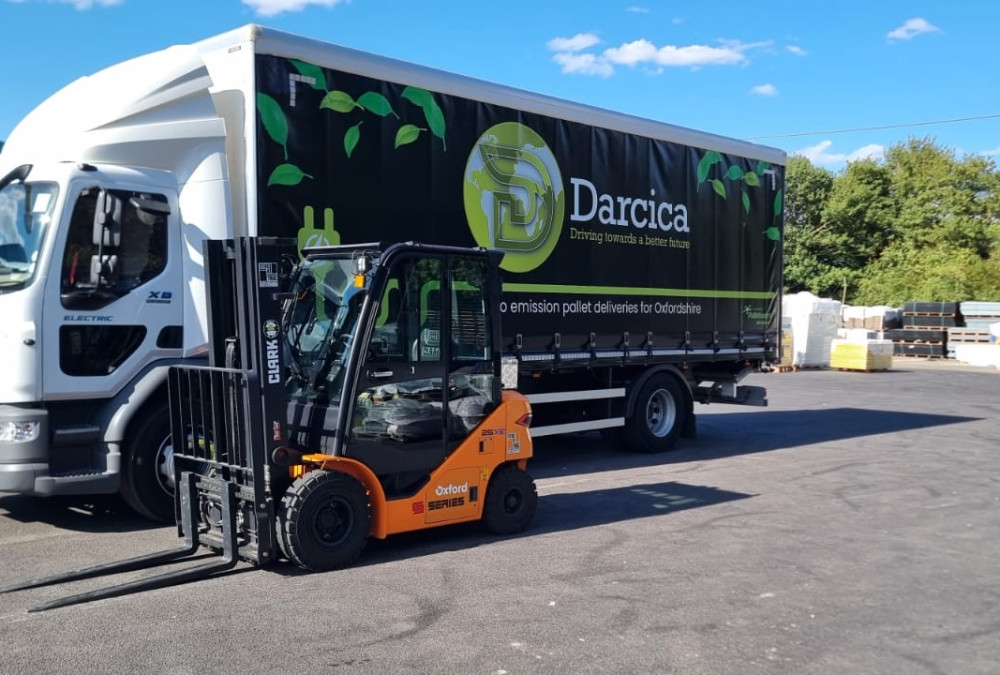
How Oxford Plastics & Darcica Logistics Built a Greener Supply Chain
When it comes to building a cleaner, more efficient supply chain, the right partnership can make all the difference. That&rsq...